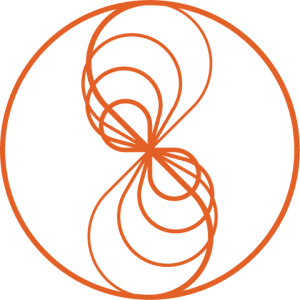Report Code
Reporting code for signs of domestic violence and child abuse in relation to professional secrecy
Praktijk Marijn Schrieken is responsible for the quality of service to its clients. This responsibility also applies to services that (presumably) involve domestic violence or child abuse.
Praktijk Marijn Schrieken is legally obliged to work with the reporting code for domestic violence and child abuse. The two legal reporting rights for domestic violence and child abuse offers professionals with a professional secrecy or other obligation of silence the right to report a suspicion of child abuse or domestic violence, even if they do not have the consent of their client.
Forms of violence
There are various forms of violence, for example:
– Physical abuse
– Emotional or mental abuse
– Financial exploitation
– Physical neglect
– Emotional or mental neglect
– Sexual violence
Purpose of the reporting code
The purpose of the Act on the Obligatory Reporting Code is that faster and more adequate help can be offered to signals of domestic violence and child abuse, so that the violence stops. With a reporting code, organizations and professionals know which steps to take when they suspect domestic violence or child abuse.
What is a reporting code?
The reporting code is a step-by-step plan for dealing with signals of domestic violence or child abuse.
There are five steps:
Step 1: Identifying signals
Step 2: Consultation with a colleague
Step 3: Talk with the client
Step 4: Assess the violence
Step 5: Make two decisions
Assessment frameworks
It will become a professional norm to report to Safe Home if there are suspicions of acute and structural insecurity. As an aid to the decision to report, as of January 1, 2019 it is obligatory for professionals to use an assessment framework in steps 4 and 5 of the reporting code.
In step 5, the distinction between providing assistance or reporting is removed. The professional always makes two separate decisions:
Is it necessary to report to Safe Home?
Is it possible to offer or organize help yourself (sufficiently)?
Assessment framework for educationalists, psychologists, (psycho) therapists, social workers and youth and family professionals
Step 1: Identifying signals
Step 2: Consultation with a colleague and if necessary with Safe Haven.
Step 3: Interview with the client
Step 4: Assessment of domestic violence or child abuse
Do I suspect domestic violence and/or child abuse on the basis of steps 1 to 3?
Do I suspect / is there acute or structural insecurity?
Step 5: Decision-making
1. Is reporting necessary?
2. Is offering / organizing help (also) possible?
Am I able to offer or organize effective (suitable) help?
Do those involved cooperate with the offered or organized help?
Does this lead to durable safety?
The assessment framework in the reporting code
The reporting code focuses on domestic violence and child abuse.
Domestic violence is understood to mean:
Physical, mental or sexual violence, or a threat thereof, by someone within the domestic circle, whereby violence is understood to be: the physical, sexual or psychological attack on the personal integrity of the victim, including elder abuse, female genital mutilation, marriage coercion and honor-related violence.
The domestic circle of the victim includes: (former) partners, family members, relatives, and family friends.
Child abuse is defined as:
any form of threatening or violent interaction of a physical, psychological or sexual nature, which is actively or passively imposed on a minor by his or her parents or other persons with whom the minor is in a relationship of dependency or unfreedom, and which results in serious harm to the minor in the form of physical or psychological injury, including honour-related violence, marriage coercion, female genital mutilation and witnessing domestic violence between parents and/or other family members as a minor.
The application of this assessment framework
An assessment framework offers a professional five considerations that support him in determining, in a specific situation involving a client/client system, whether it is advisable to report to Safe Home or whether he can offer or organize help himself. The assessment framework sets out the professional standard for situations involving domestic violence and child abuse (or suspicions thereof) in which the professional groups consider it necessary to report to Safe Haven. This assessment framework offers the helping questions that the professional can ask himself in a specific situation.
The assessment framework is therefore not a checklist that leads to a yes or no answer.
What does Safe Haven do?
Safe Haven is there to give advice about and to report suspicions of all kinds of domestic violence and child abuse.
If the assessment framework determines that there is a suspicion of acute or structural insecurity, or when providing or organizing help is not sufficiently effective, then reporting to Safe Haven is a professional norm.
You can also ask Safe Home for advice:
On the basis of anonymous data
When you are not sure whether there are signs of domestic violence or child abuse.
In every step of the reporting code
Safe Home always gives feedback after deciding on the report.
Client means any person to whom the therapist of Praktijk Marijn Schrieken provides his professional services.
Taking into account:
The Personal Data Protection Act; the Youth Care Act, as well as the upcoming Youth Act; the Social Support Act; the privacy regulations of Practice Marijn Schrieken

